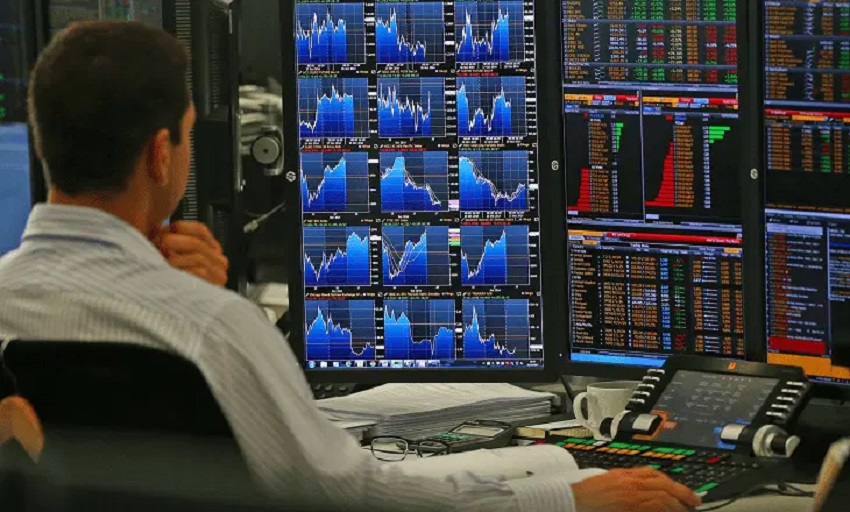If you’re looking to stay ahead in investing, high-frequency trading (HFT) can be an immensely powerful tool. HFT allows traders to capitalise on market opportunities faster than ever before and increase their potential for returns when markets are volatile.
In this guide, we discuss the ins and outs of HFT—including what it is, its advantages and disadvantages, and strategies you can use to ensure your success with high-frequency trading. Read on to better understand this advanced strategy so that you have what it takes to succeed in any market condition.
What is high-frequency trading, and how does it work
High-frequency trading is algorithmic trading that enables rapid-fire market orders with the help of advanced computer algorithms and high-performance hardware. This type of trading uses complex mathematical models and automated decision logic to interpret thousands of data points related to market movements rapidly.
High-frequency traders are usually equipped with ultra-fast networks, order-tracking software, and direct access to exchanges, allowing their algorithms to be executed in nanoseconds. With this method, traders can quickly identify price anomalies, execute orders, and even benefit from large swings in liquidity.
By sending out floods of buy or sell orders before even the human players can react, these traders aim to capitalise on small movements in price. While there is controversy around how high-frequency trading affects the financial markets, it can offer an exciting way for investors to make money at lightning speeds.
The benefits of high-frequency trading
The primary benefit of high-frequency trading is its ability to provide liquidity when it is otherwise lacking. By sending out thousands of buy and sell orders, HFT firms can help make markets more efficient and allow them to trade more significant positions without moving the market price. Moreover, HFT allows traders to reduce their exposure to risks by quickly cutting losses and taking advantage of opportunities as soon as they arise.
Additionally, regarding options trading, high-frequency traders can benefit from options arbitrage opportunities. Options arbitrage is buying options contracts at a low price and selling them at a higher price. By taking advantage of these minor price differences, traders can make trades without taking on too much risk.
Finally, this type of trading allows investors to take advantage of arbitrage opportunities that may otherwise be unavailable. Traders can simultaneously capitalise on discrepancies between various exchanges or even within different markets.
The risks of high-frequency trading
High-frequency trading is a complex and expensive endeavour. The sophisticated hardware necessary to carry out these trades can be prohibitively expensive, making it difficult for newcomers to get involved. Additionally, HFT strategies require big data—traders need access to comprehensive real-time market information to execute their strategies effectively.
Moreover, due to the complexity of high-frequency trading algorithms, opportunities are often missed or ignored due to computing errors or programming bugs. Finally, since HFT works best when markets are highly volatile, there is potential for huge losses if the markets don’t move as expected.
How to get started in high-frequency trading
The first step to getting started in high-frequency trading is understanding the markets you’re interested in. Be sure to research options trading, futures markets, and any other financial instruments that might apply to your HFT strategy. Additionally, familiarise yourself with each market’s regulations to know what types of transactions are permissible.
Once you understand how options and futures work, it’s time to examine the hardware and software options available for high-speed trades. You’ll also need access to data feeds for real-time information about market movements and order routing systems for executing orders quickly.
Finally, if you need to gain the programming experience to develop your own HFT algorithm, many third-party software packages can help you get started. Some of these can even be used to test potential trading strategies before risking real money in the markets.
Tips for success in high-frequency trading
High-frequency trading is risky and requires a lot of dedication to master. Here are some tips for success:
- Start small—don’t risk too much capital on any given trade
- Keep an eye on market news—be ready to make changes if something unexpected happens
- Monitor your strategies carefully and be prepared to adjust them as needed
- Stay up to date on the latest technology developments in HFT
- Practice proper risk management—never risk more than you can afford to lose
- Utilise back-testing before going live with any strategies
By following these tips, traders should be able to pursue high-frequency trading safely and successfully.
Conclusion
With the right approach, high-frequency trading can be lucrative and rewarding. By taking advantage of opportunities as soon as they arise, traders can capitalise on short-term trends and make trades quickly. However, it’s essential to understand the potential risks of this type of trading before getting started. With proper research, dedication, and risk management strategies, traders can maximise their chances of success in high-frequency trading.

